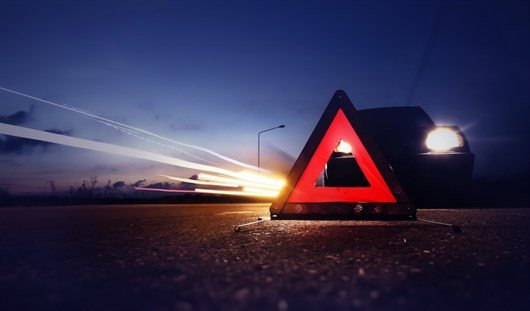Smart motorway technology requires ‘urgent’ improvement

- A third of broken-down vehicles are not being detected by smart motorway technology
- False detection rates of breakdowns on smart motorways are also too high
- Transport watchdog ORR says National Highways needs to urgently improve its performance in this area
National Highways needs to ‘urgently’ improve technology which detects when a vehicle has broken down on a smart motorway, according to transport watchdog the Office of Rail and Road (ORR).
The Government paused the roll out of all-lane running smart motorways, which do not have a permanent hard shoulder, earlier this year and committed to installing stopped vehicle detection (SVD) technology on every existing all-lane running smart motorway by March 2023.
Although this target has already been achieved, a new report published by the ORR has shown the actual performance of SVD is falling short of the performance requirements that National Highways set itself.
It shows that a third of broken-down vehicles are missed and that "false detection rates" of breakdowns are too high.

Conservative MP Iain Stewart, chair of the Transport Committee, which has previously highlighted concerns about smart motorways to the Government, said that the new data "will undermine trust that this system can work".
“The statistics revealed today by the Office for Rail and Road raise considerable concerns about the performance of National Highways in protecting drivers on smart motorways. This is putting lives at risk," he said.
“The idea that in some regions of the country less than 60 per cent of stopped vehicles were detected on smart motorways is chilling. In addition the fact that, in some areas, it took over 60 seconds for a stopped vehicle to be detected is also deeply concerning. Every second counts when cars, coaches and lorries are driving at up to 70 mph and there’s no hard shoulder."
ORR chief executive John Larkinson said: “Our previous work on smart motorway data has shown that these roads are as safe as the motorways they replaced but the number of live lane breakdowns are higher.

“Having the SVD radar detection equipment in place sooner than planned has helped to reduce the duration of these breakdowns more quickly but it’s not working as well as it should.
“While it is still too early to have robust data, it’s clear National Highways needs to urgently improve its performance in this area.”
The ORR’s report states that National Highways is seeking rapid improvements to the SVD technology to achieve the required performance levels by the end of June 2023.
The regulator said it is scrutinising the company’s progress and will take further action should it not appear to be on track to achieve the required improvements.
What is a smart motorway?
There are three types of smart motorway:
- All-lane running: the hard shoulder is permanently converted into a live lane and there are emergency refuge areas at regular intervals.
- Dynamic hard shoulder: the hard shoulder is converted to a live lane at peak times of congestion.
- Controlled: a motorway with three or more lanes, a hard shoulder and variable speed limits.
Which motorways are smart motorways?
There are around 375 miles of smart motorways on sections of the M1, M3, M4, M5, M6, M20, M23, M25, M27, the M40/M42 interchange, M56 and M62.
What should we do if we break down in the live lane of a Smart motorway?

Why don't National Highways educate drivers about motorways and the left lane?


